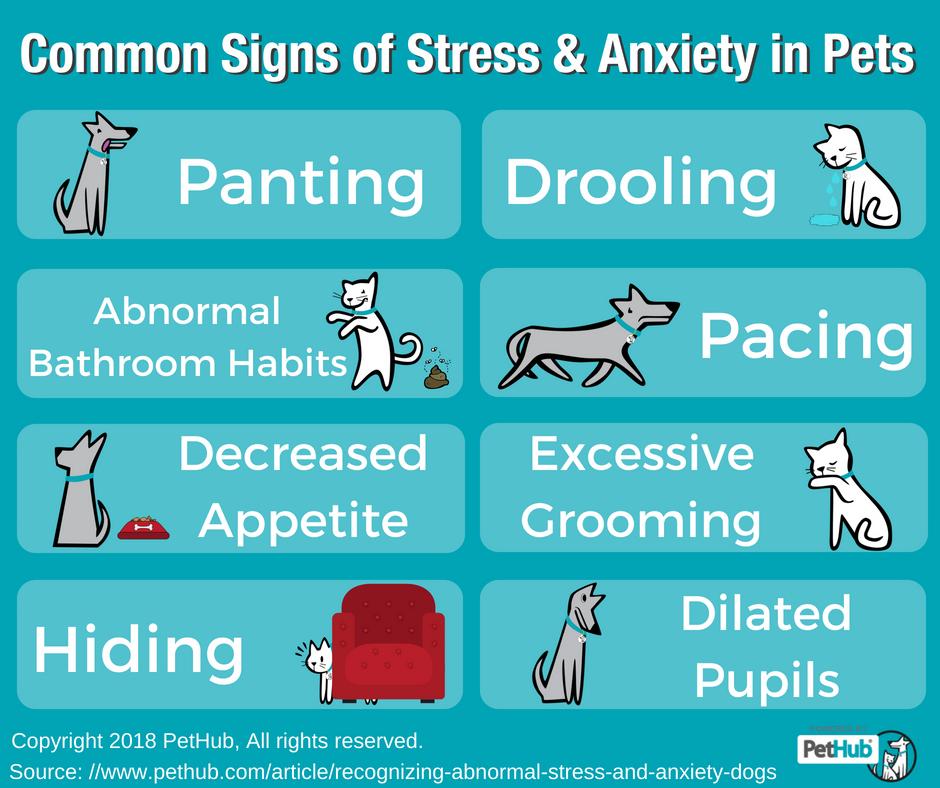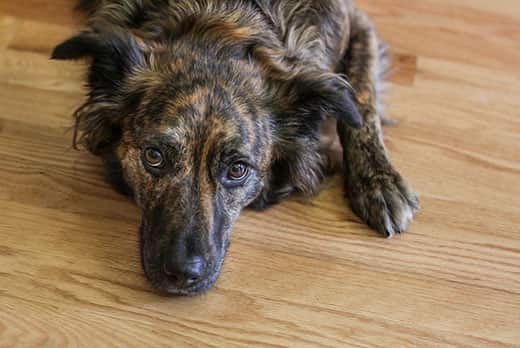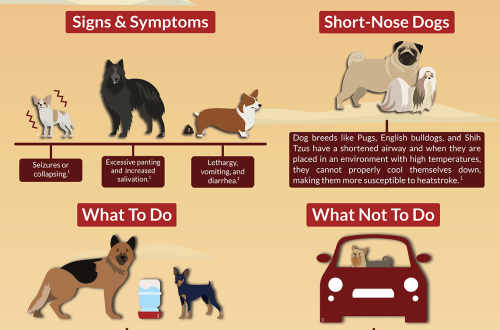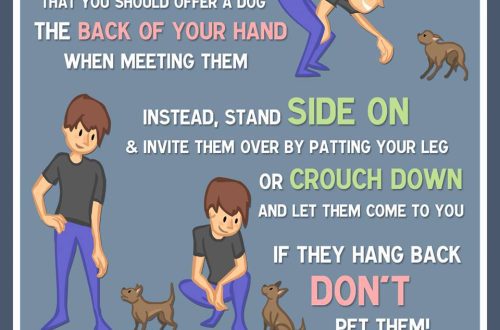
Stress in a dog: symptoms and treatment
People have an amazing ability to understand by facial expressions and gestures that something is bothering another person. But how to identify stress in a pet? It is important for the owner of the dog to understand the ways in which he tries to communicate his concern. As soon as you can recognize the signs of stress, there will be an opportunity to use several tricks to normalize the condition of your tailed friend.
Contents
How does severe stress manifest itself in a dog?
Even in humans, diagnosing stress can be difficult. What can we say about animals that can not talk about their worries! It is very important to learn to recognize the signs of anxiety in your dog. Ignoring the problem can lead to various forms of unwanted behavior that can ruin your relationship with your pet.
Unfortunately, solutions aimed solely at eliminating manifestations of a behavioral nature do not always allow you to completely get rid of the unwanted behavior of the dog. If the source of anxiety is not eliminated, this behavior may continue to repeat. At the same time, ridding the dog of stress can, if not eliminate bad behavior completely, then at least significantly reduce it.
Learning about the signs of stress in dogs is the first step to building a fulfilling and happy relationship with your dog. According to the American Animal Hospital Association, common signs of stress in dogs include:
Loss of appetite.
Avoidance of communication and apathy.
Digestive problems – vomiting, diarrhea or flatulence.
Excessive licking and chewing of the skin, sometimes to the point of injuring oneself.
Constant demand for attention or contact.
Destructive behavior – damage to furniture, pillows, shoes, etc.
Submission posture with lowered body, tucked tail and ears laid back.
Biting, grasping or biting.
Increased drowsiness or changes in sleep patterns.
Unreasonable barking and whining.
Tension in the body, heavy breathing, trembling and stiff muscles.
Excessive shedding.
Obsessive walking back and forth and sniffing.
Involuntary urination and defecation.
Unusual repetitive behaviors are tail chasing, paw chewing, or lip licking.
Grimace resembling a smile.
Common Causes of Stress in Dogs
As with humans, life changes are a stressor for four-legged friends, and some dogs find them worse than others. Unfamiliar people, places, or animals, or conversely, separation from familiar people, places, or animals can cause anxiety or stress in the dog.
According to the Merck Veterinary Manual, other common causes of stress include loud noises such as thunderstorms or fireworks, punishment, and lack of physical activity or mental stimulation.
Pain and stress can often present with similar symptoms in dogs. If the dog’s symptoms seem to be under stress, it may be that something is in pain. If one of the above signs appears, it is better to take the dog to the doctor. You should not choose a course of treatment aimed solely at getting rid of symptoms, if there is a more serious pathology that you need to worry about.
The behavior of the owner can also be stressful for the dog. Four-legged pets are a mirror of their owners’ emotions, so if the owners are under stress, the dog can pick up on this anxiety and become stressed too. If your pet’s behavior has changed recently, it’s worth considering the changes that have taken place in your own life.
If the owner is worried about work, relationships with loved ones or moving, he may unconsciously shift these worries onto his dog. A great way to get over this kind of anxiety is to just spend time with your four-legged friend and let him know that everything is fine. This can also reduce owner stress.

Sedatives for dogs
If the dog is stressed, the treatment can be discussed with a veterinarian and the appropriate drug can be selected. There are many tools available in offline and online pet stores to help relieve stress in pets.
These include products that contain dog calming pheromone (DAP). It mimics the pheromones of a breastfeeding mother for a stress-relieving effect. They are offered in a variety of forms, including collars, diffusers, wipes and sprays.
Storm blankets and calming vests can also provide relief for restless dogs. There is a theory that in situations that provoke anxiety, light pressure can help the dog calm down. Storm blankets even help dissipate static electricity that builds up during a storm, allowing for extra comfort for your dog.
Certain pharmaceutical drugs can also relieve stress in dogs, including:
Solliquin. Supplement containing plant extracts that have a calming effect.
Zylkene. A supplement that can be taken both long-term and short-term to reduce anxiety. It can be started up to two days before an upcoming stressful event to reduce your pet’s anxious behavior.
Sileo. FDA-approved product for the management of anxiety symptoms in dogs at high noise levels. It can be taken alone or in combination with other medications or supplements for stress and anxiety.
How to relieve stress in a dog, a veterinarian will advise. He can recommend suitable supplements, but be aware that there are other options. For example, medicated pet foods that contain stress-relieving ingredients. Changing the food can help relieve symptoms of anxiety in a dog.
The list of prescription medications and antidepressants available for dogs with general anxiety and stress disorders is growing. If the dog is experiencing severe stress, you need to make an appointment with a veterinarian. This will help you decide if your dog needs medication or other options.
What to do if your dog is stressed
In addition to medications, there are several other ways to relieve stress in dogs that can be used as part of a more holistic approach.
Regular physical activity and games with the dog. Daily walks may not be enough, so it is better to come up with additional activities.
Refusal to stay in places in which the dog experiences stress. The owner may want to take the dog to an open-air festival or farmer’s market to please it. It is important to remember that such an adventure can cause stress for the animal.
Organized security zone. This can be anywhere the dog feels comfortable, from the bed to the dog kennel. You can give your dog a sweatshirt or a blanket that smells like the owner. This will greatly reduce her anxiety when the owner is not at home.
Establish consistent rules and enforce them. The dog must know what the owner expects from it. Remember to reward positive behavior and ignore the bad. If you rush your dog to the rescue whenever he seems to be nervous, he will quickly figure it out and use it to his advantage. Any pet owner must learn to distinguish between situations where their pet really needs to be reassured from situations where it will only reinforce bad behavior.
Balanced and complete food. This measure is necessary to maintain the health of the dog – both physical and mental.
It is important to understand that not all anxiety behaviors in dogs can be compensated for. Like humans, some forms of anxiety behavior persist throughout a dog’s life. The owner needs to help her in every possible way to cope with them.
In order to correctly establish the cause and choose a course of treatment, it is best to consult a veterinarian. In addition, it is important to control your reactions to pet stress. It is important to remain calm in dealing with the dog, rewarding him for good behavior and refraining from scolding and punishing him for unwanted displays.





